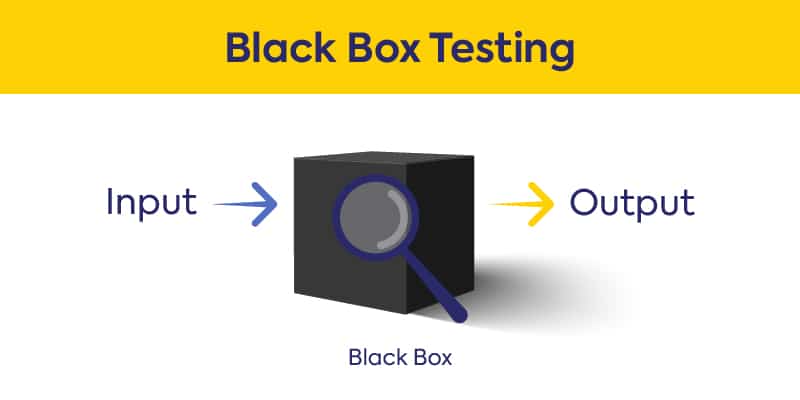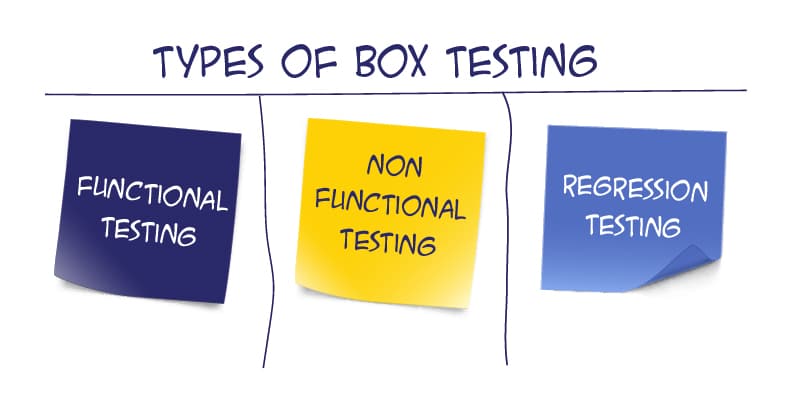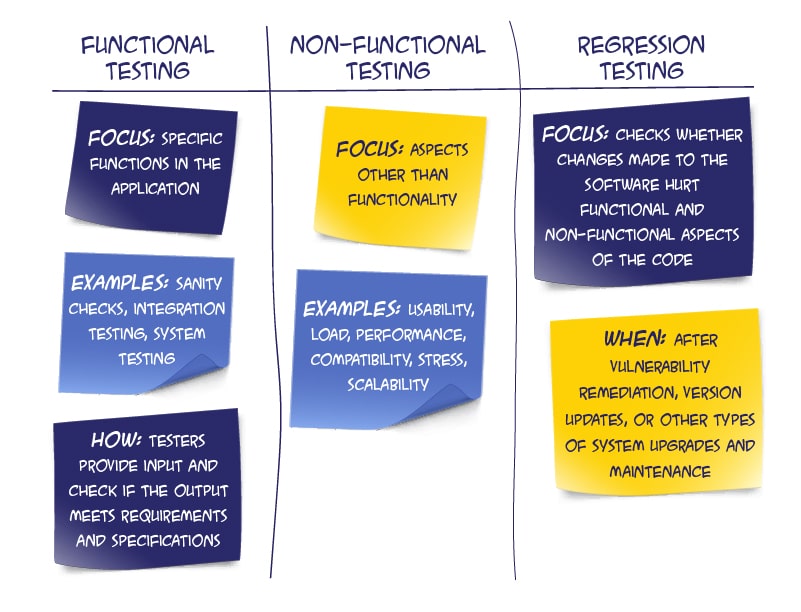Black Box Testing: What You Need to Know


Today’s software development life cycle includes a variety of quality and security testing techniques at every stage. Frequent testing throughout the DevOps pipeline is imperative considering the ever-increasing pace of development. One of the most common application security testing methods that companies use to ensure the products they are pushing out are secure and high-quality is black box testing.
What Is Black Box Testing?
Black box testing is a broad category that includes a variety of techniques and technologies that check software from the outside without scanning the code. Black box testing refers to any type of software test that examines an application without knowledge of the internal design, structure, or implementation of the software project.

Black box testing can be performed at multiple levels, including unit testing, integration testing, system testing, or acceptance testing. At any of these levels, black box testing examines the input and output of an application to ensure that the software runs as intended under a variety of conditions and to uncover and remediate any errors.
Types of Black Box Testing
The term black box testing covers an extremely wide variety of tests. Three of the most common types of black box testing are functional testing, non-functional testing, and regression testing.

#1 Functional testing
A type of black box testing that focuses on specific functions in the application. This includes sanity checks, integration testing, or system testing. Functional testing is performed by providing a certain input and checking if the output meets the software requirements and specifications.
#2 Non-functional testing
This includes a number of black box testing types that don’t examine functionality. Non functional testing focuses on other aspects and requirements, like usability, load, performance, compatibility, stress, or scalability, to name a few.
#3 Regression testing
Performed after vulnerability remediation, version updates, or other types of system upgrades and maintenance. Regression testing checks whether changes made to the software hurt the existing functional or non-functional aspects of the code.

Black Box vs. White Box Testing
Black box and white box testing complete each other, as they are used to examine and evaluate applications in two very different manners.
While black box testing looks at input and output with no knowledge of the code and doesn’t require software development expertise, white box testing requires knowledge of the application and is usually performed by developers or testers that are proficient in software development.
White box testing examines aspects of the software that black box testing can’t access, like source code, syntax, design, architecture, and configuration. Test cases for black box and white box testing are also very different: black box testing is based on requirements and specifications, white box testing is based on detail design.

Black Box Security Testing
As attention to application security increases and application security testing (AST) tools gain more and more attention, black box testing has become an important method for application security testing.
Black box security testing focuses on the security of an application while examining it from the outside, rather than testing the code from inside the application.
A good example, and one of the most popular black box security testing technologies, is dynamic application security testing (DAST), in which an application’s security is checked during run time. DAST testing helps teams uncover major security risks like cross-site scripting, SQL injection or command injection, path traversal, and insecure server configuration.
One of the advantages of black box security testing with tools like DAST is that it can detect security vulnerabilities that white box testing tools like static application security tools (SAST), which scans code for security vulnerabilities at rest, might miss. The main advantages of black box testing at runtime are that they produce a relatively low number of false positives and provide security teams with an accurate view of an application’s exploitability.
Black Box Penetration Testing
Penetration testing is another black box security testing method. In penetration testing, testers attempt to mimic the behavior of malicious players attacking an application from the outside. Testers try to create attack scenarios that are as close as possible to how black hat hackers might behave in order to ensure that all attack vectors are covered.
While traditionally penetration testing was a manual endeavor, today quite a few solutions are available to do the heavy penetration lifting by automating the process.
Black Box Testing: Ensuring Quality and Security from the Outside-In
Testing early and often is a crucial principle in software development, and it isn’t complete without the different types of black box testing that we have touched upon here.
As software development organizations race to create the most innovative products of tomorrow, ensuring that they are secure and high-quality, while sticking to competitive release cycles is no easy feat. Black box testing is an essential component. It allows us to poke and prod our software so that we can rest assured knowing we are releasing the best software products possible and that customers will keep coming back for more.
